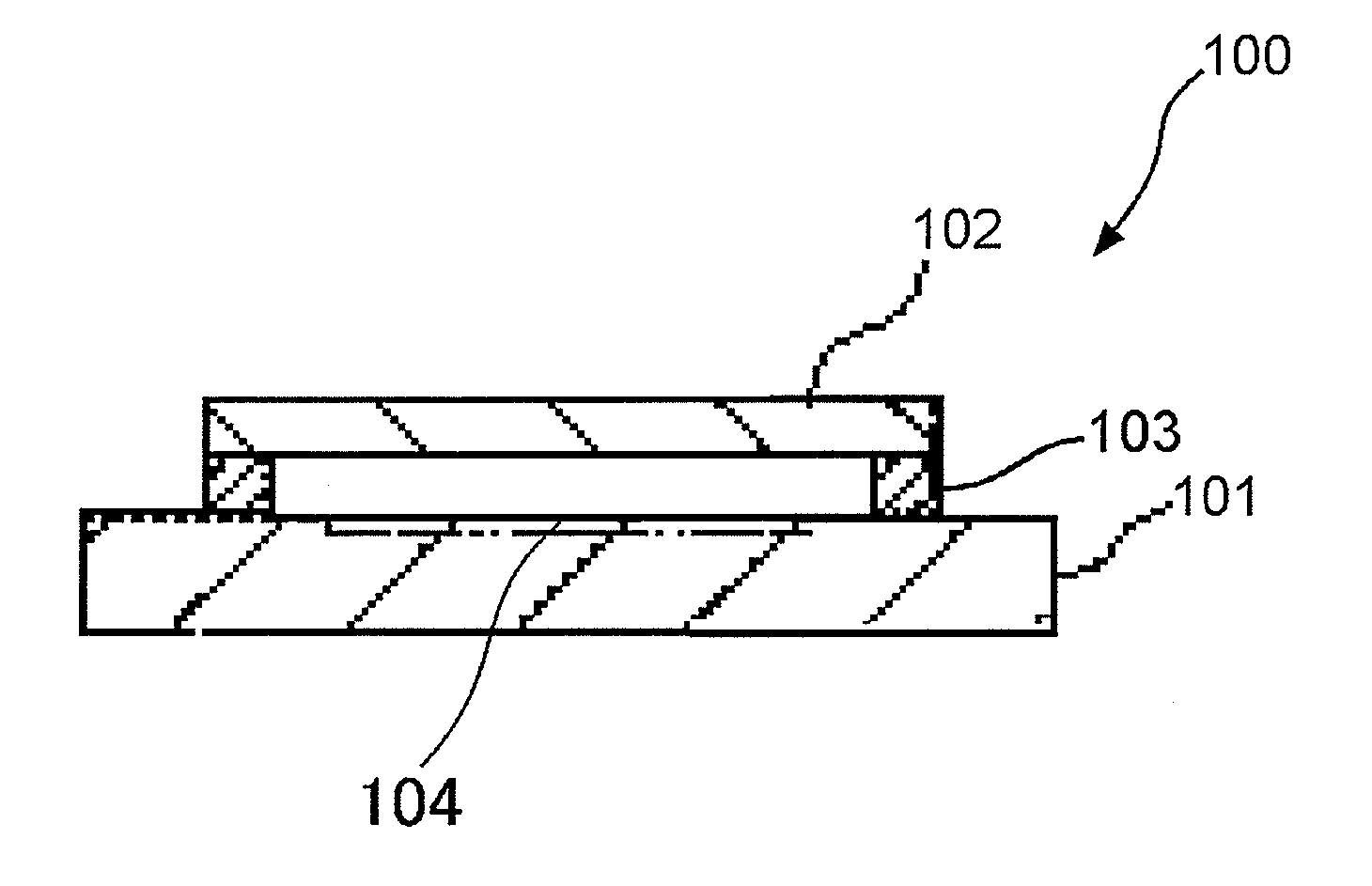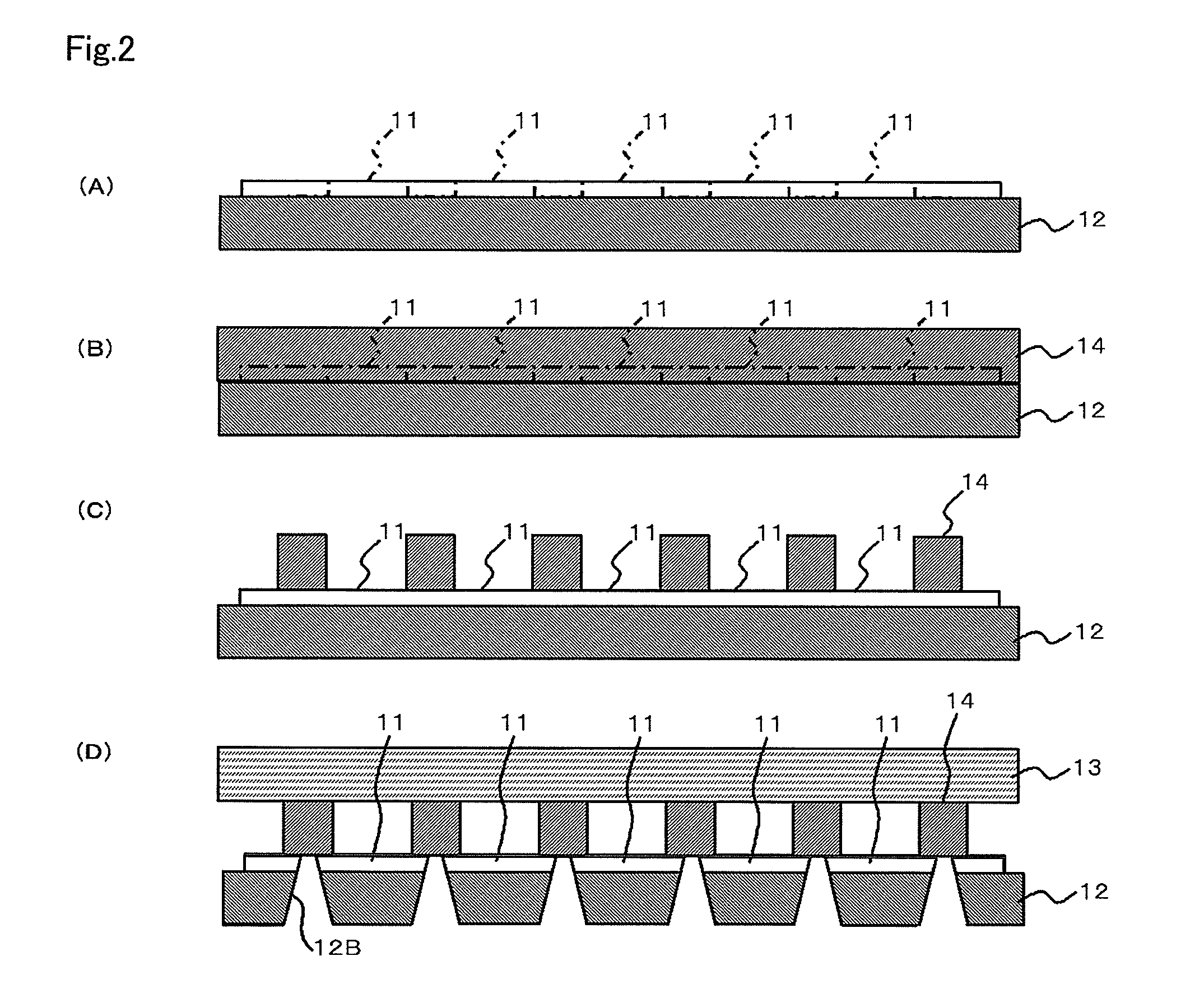Light-receiving device and method of manufacturing the same
a light-receiving device and light-receiving technology, which is applied in the direction of solid-state devices, adhesive types, semiconductor devices, etc., can solve the problems of reducing the strength reducing the reliability of the device, and reducing the yield. , to achieve the effect of reducing foreign materials, reducing the undercut of the frame member, and improving light permeability
- Summary
- Abstract
- Description
- Claims
- Application Information
AI Technical Summary
Benefits of technology
Problems solved by technology
Method used
Image
Examples
example 1
[0122]1.Synthesis of an Alkali-Soluble Resin ((meth)acrylic-Modified bis-A Novolac Resin)
[0123]In a 2 liter flask, 500 g of a solution of a novolac type bisphenol-A resin (Phenolite LF-4871, manufactured by Dainippon Ink And Chemicals, Incorporated) in MEK (methyl ethyl ketone) (solid content: 60%) was placed, followed by adding 1.5 g of tributylamine as a catalyst and 0.15 g of hydroquinone as a polymerization inhibitor to heat at 100° C. To the mixture, 180.9 g of glycidyl methacrylate was added dropwise over 30 min, and the mixture was reacted with stirring at 100 degrees C. for 5 hours to give 74% methacryloyl-modified novolac type bisphenol-A resin MPN001 (methacryloyl modification rate: 50%, “Methacryl-modified bis-A novolac resin” in Tables 1 and 2) with a solid content of 74%.
2. Preparation of an Adhesive Varnish
[0124]15% by weight of trimethylolpropane trimethacrylate (manufactured by Kyoeisha Chemical Co., Ltd., Light-Ester TMP) as a photopolymerizable resin, 5% by weight ...
example 2
[0126]The procedures in Example 1 were conducted except a composition of an adhesive varnish of Example 1 was as described below. A content of trimethylolpropane trimethacrylate was 5% by weight and a content of the (meth) acrylic-modified bis-A novolac resin was 70% by weight as a solid.
example 3
[0127]The procedures in Example 1 were conducted except a composition of an adhesive varnish of Example 1 was as described below. A content of trimethylolpropane trimethacrylate was 25% by weight and a content of the (meth)acrylic-modified bis-A novolac resin was 50% by weight as a solid.
PUM
| Property | Measurement | Unit |
|---|---|---|
| elastic modulus | aaaaa | aaaaa |
| elastic modulus | aaaaa | aaaaa |
| wavelength | aaaaa | aaaaa |
Abstract
Description
Claims
Application Information
 Login to View More
Login to View More - R&D
- Intellectual Property
- Life Sciences
- Materials
- Tech Scout
- Unparalleled Data Quality
- Higher Quality Content
- 60% Fewer Hallucinations
Browse by: Latest US Patents, China's latest patents, Technical Efficacy Thesaurus, Application Domain, Technology Topic, Popular Technical Reports.
© 2025 PatSnap. All rights reserved.Legal|Privacy policy|Modern Slavery Act Transparency Statement|Sitemap|About US| Contact US: help@patsnap.com



